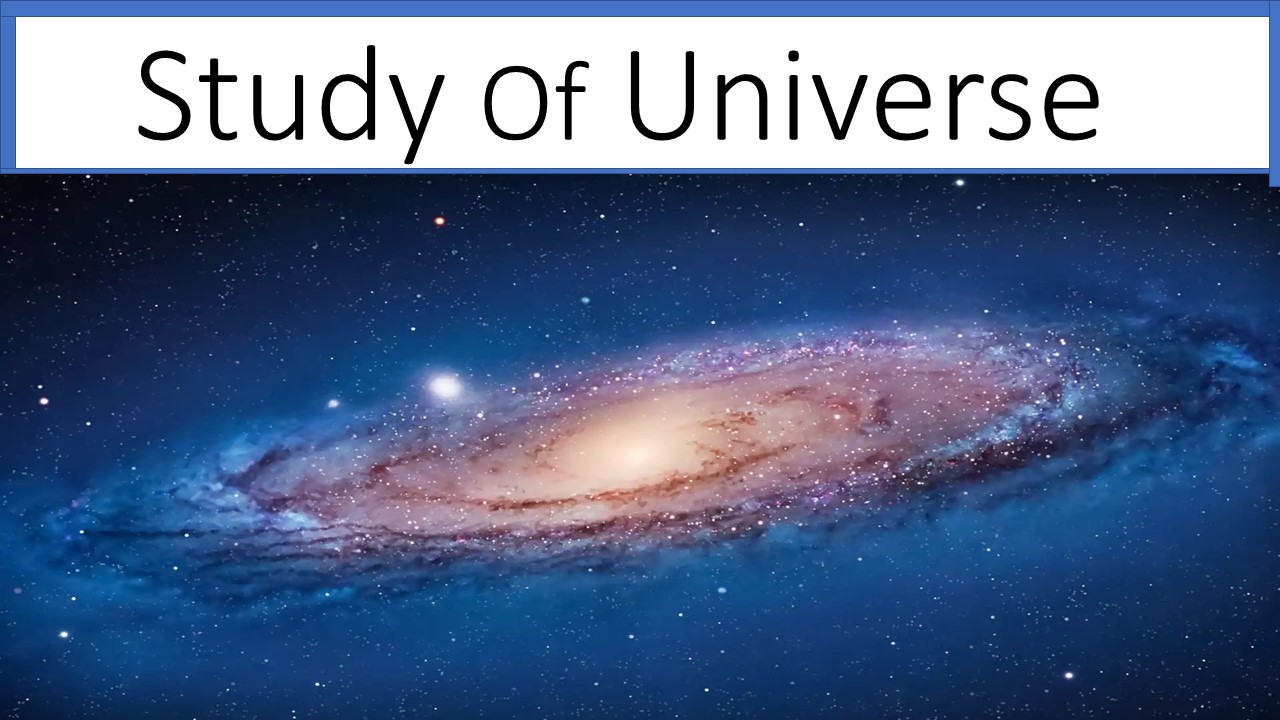
Study of our universe
Cosmology is the scientific study of the origin, evolution, structure, and eventual fate of the universe. It seeks to understand the large-scale properties of the cosmos using observations, physics, and mathematics. Modern cosmology is rooted in the Big Bang Theory, which describes how the universe expanded from an extremely hot, dense state. Cosmologists study phenomena such as dark matter, dark energy, cosmic microwave background radiation, black holes, and galaxy formation to gain insight into how the universe behaves on the grandest scales. The field bridges astronomy and physics, combining observations from powerful telescopes with theories of relativity and quantum mechanics. As technology advances, cosmology continues to evolve, offering deeper insight into questions about time, space, and the very nature of existence itself.
Our Universe is a vast, dynamic expanse that encompasses all of space, time, matter, and energy. It began approximately 13.8 billion years ago with the Big Bang, a monumental event that set space and time into motion and led to the ongoing expansion of the cosmos. Composed of billions of galaxies, each containing millions or even billions of stars, the universe also holds countless planets, nebulae, black holes, and other celestial phenomena. Despite its observable enormity, much of the universe remains a mystery, with dark matter and dark energy making up about 95% of its total content—yet their exact nature is still unknown. Governed by physical laws such as gravity, relativity, and quantum mechanics, the universe continues to evolve, offering endless opportunities for discovery. As technology advances, scientists peer deeper into space and further back in time, seeking to unravel the profound questions of how everything began, how it works, and what the ultimate fate of the universe may be.The Big Bang Theory is the leading scientific explanation for the origin of the universe. It proposes that the universe began as a singular, infinitely hot and dense point approximately 13.8 billion years ago. This point rapidly expanded in a massive explosion—not like a typical blast, but an expansion of space itself—marking the beginning of time and space as we know it. As the universe expanded, it cooled, allowing particles to form atoms, primarily hydrogen and helium. Over millions of years, these atoms clumped together under gravity to form stars and galaxies. The theory is supported by several key observations: the redshift of galaxies (showing that the universe is still expanding), the cosmic microwave background radiation (a faint glow left over from the early universe), and the abundance of light elements. Though it doesn’t explain what came before the Big Bang or why it happened, the theory provides a powerful framework for understanding the evolution of the cosmos from its earliest moments to the vast, complex structure we observe today.
- An overview of the universe — a scientific explanation of the cosmos, its origin (like the Big Bang), structure, and components (galaxies, stars, planets, dark matter, etc.).
- A philosophical or spiritual perspective — thoughts on humanity’s place in the universe or the meaning of existence.
- A specific project or book — such as a TV series, documentary, or literary work titled Our Universe.
- Creative writing or poetry — perhaps you’re looking to write something inspired by the universe?
The Big Bang Theory is the leading scientific explanation for the origin of the universe. It proposes that the universe began as a singular, infinitely hot and dense point approximately 13.8 billion years ago. This point rapidly expanded in a massive explosion—not like a typical blast, but an expansion of space itself—marking the beginning of time and space as we know it. As the universe expanded, it cooled, allowing particles to form atoms, primarily hydrogen and helium. Over millions of years, these atoms clumped together under gravity to form stars and galaxies. The theory is supported by several key observations: the redshift of galaxies (showing that the universe is still expanding), the cosmic microwave background radiation (a faint glow left over from the early universe), and the abundance of light elements. Though it doesn’t explain what came before the Big Bang or why it happened, the theory provides a powerful framework for understanding the evolution of the cosmos from its earliest moments to the vast, complex structure we observe today.
Our Universe is a vast and mysterious expanse that contains everything in existence—space, time, matter, and energy. It began approximately 13.8 billion years ago with a massive expansion known as the Big Bang, which marked the birth of time and space. Since then, the universe has been constantly expanding, with billions of galaxies drifting apart in the fabric of space. These galaxies are made up of stars, planets, gas, dust, and dark matter—an invisible substance that exerts gravitational force. Most of the universe, however, is made up of dark energy, a mysterious force driving its accelerated expansion. Earth is just a tiny part of one galaxy, the Milky Way, orbiting a medium-sized star—the Sun. Despite its immense size and complexity, scientists continue to explore the universe through powerful telescopes and space missions, seeking to answer profound questions: Where did we come from? Are we alone? What is the ultimate fate of the cosmos? Our universe, though ancient and ever-changing, still holds countless mysteries waiting to be discovered.



